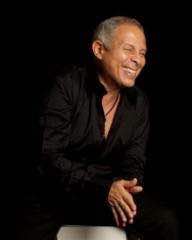Latin America / Venezuela / Caracas
Yamilet Pinate. The Salsa Designer
Born in Caracas-Venezuela, she grew up in the Parroquia 23 de Enero, there since she was a child she began to enjoy, listen and dance good Salsa. Graduated in Administration, with a study of speech and in other areas so different from advertising design.

I started in this field of design in 2010. My first images were collages that I made for a website dedicated to promoting and supporting the genre that makes us move our feet… Salsa. Little by little, the interest in learning how to use the appropriate programs to design grew and that is how the passion for making designs for events began, initially for Salsa events.
I have done advertising for events held in the cities of Maracay, Caracas, Los Guayos, San Felipe, Puerto Cabello. Among them, with great productions such as Las Noches The Bronx presenting international artists such as Adalberto Santiago, Franquie Vásquez and Luigi Texidor, I have advertised for important events in our country such as El Arepazo, Las Tradicionales Fiestas de Rafael Muro, Producciones Sol100% Salsa, Rest .
El Lagar, The Traditional Black Night in Maracay, El Guateque de Producciones Taylor presenting Bailatino, Naty and his orchestra in Valencia, Bacheo Orchestra in Maracay, Naty and his Orchestra in Maracay, Grupo Mango in Maracay, presentation of the Tribute Orchestra Cheo Navarro in Maracay, Rodrigo Mendoza, Marcial Isturiz, in Puerto Cabello. Meeting of great Salsa DJs in Guatire, presentation of the Salsaboryson Orchestra in Los Guayos, presentation of the Palo Mayor Orchestra in the Sarao Caracas.


















